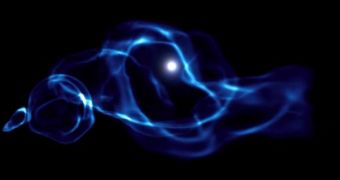
If too many formed in the early universe, they changed the picture of the leftover radiation from the early universe, known as the cosmic microwave background (CMB). What's more, models of primordial black hole formation ran into observational issues. While the idea was interesting, most astrophysicists focused instead on finding a new subatomic particle to explain dark matter. Hawking suggested that these "primordial" black holes might be responsible for dark matter. There, pockets of matter could spontaneously reach the densities needed to make black holes, flooding the cosmos with them well before the first stars twinkled. In 1971, he suggested that black holes formed in the chaotic environment of the earliest moments of the Big Bang. And there simply isn't enough normal matter to make all the dark matter astronomers have observed.

Scientists know how much normal matter is in the universe from calculations of the early universe, where the first hydrogen (opens in new tab) and helium (opens in new tab) formed. So making black holes requires many stars - which requires a bunch of normal matter. Unfortunately, in the modern universe, black holes form only after massive stars die, then collapse under the weight of their own gravity. After all, black holes are famously dark, so filling a galaxy with black holes could theoretically explain all the observations of dark matter. It's tempting to think that black holes might be responsible for this elusive stuff.

It just floats around being massive, affecting the gravity within galaxies. Dark matter makes up over 80% of all the matter in the universe, but it doesn't directly interact with light in any way.


 0 kommentar(er)
0 kommentar(er)
